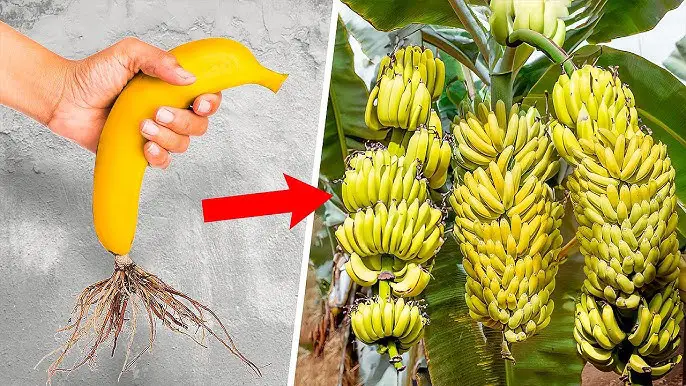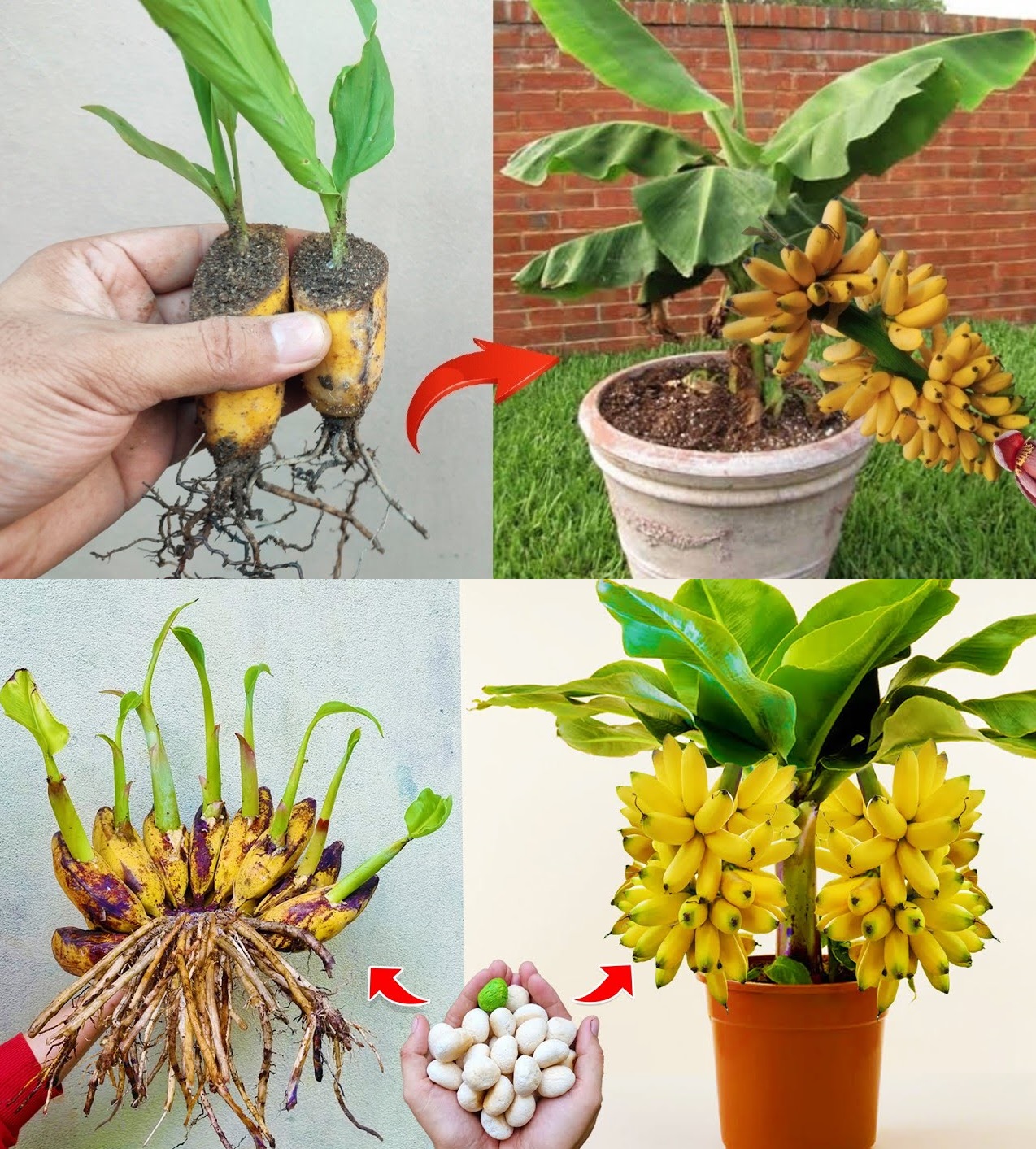
Growing banana trees from banana is a unique and fascinating process. Here’s a beginner’s guide to help you grow banana trees successfully using the banana plant’s seeds or suckers:
Growing from Seeds:
- Selecting a Banana Variety: Choose a banana variety that is well-suited for your climate. Some common varieties include Cavendish, Dwarf Cavendish, and Grand Nain. Keep in mind that bananas grown from seeds may not produce the same quality fruit as the parent plant.
- Harvesting Seeds from a Ripe Banana: Extract seeds from a ripe banana. Note that many commercial bananas are seedless, so it’s best to use bananas from local markets or specialty stores that may contain viable seeds. Clean the seeds and allow them to air dry.
- Seed Germination: Plant the seeds in a well-draining potting mix, burying them about 1/4 inch deep. Keep the soil consistently moist but not waterlogged. Place the pot in a warm, humid environment, as bananas thrive in tropical conditions. Germination can take several weeks to months.
- Transplanting Seedlings: Once the seedlings have grown to a few inches in height and have several leaves, transplant them into larger pots or directly into the ground if the outdoor conditions are suitable. Choose a sunny location with protection from strong winds.
- Providing Care: Bananas need a lot of sunlight to thrive. Ensure they receive at least 10-12 hours of direct sunlight each day. Keep the soil consistently moist but not soggy. Fertilize with a balanced, slow-release fertilizer, and consider using organic matter like compost.
- Managing Height: Banana plants can grow quite tall. If you’re growing bananas indoors or in a limited space, you can control their height by pruning. Remove excess suckers and trim the main stem to the desired height to encourage lateral growth.
Growing from Suckers:
- Selecting a Healthy Sucker: Suckers are shoots that emerge from the base of an established banana plant. Choose a healthy sucker with a well-developed root system. Gently separate the sucker from the main plant.
- Transplanting Suckers: Plant the sucker in well-draining soil, either in a large pot or directly in the ground. Ensure the soil is rich in organic matter and has good drainage. Water the transplanted sucker thoroughly.
- Providing Care: Similar to growing from seeds, provide ample sunlight, keep the soil consistently moist, and fertilize regularly. Maintain a warm and humid environment, especially if growing bananas in a non-tropical climate.
- Support and Pruning: As the banana plant grows, provide support for the main stem to prevent breakage, especially when bearing fruit. Remove excess suckers to focus the plant’s energy on fruit production.
- Harvesting: Banana plants typically take about 9-12 months to mature and produce fruit. Harvest bananas when they reach their full size and color. The fruit is ready when it easily separates from the stem.
Growing banana trees can be a bit challenging, especially in non-tropical climates, but with proper care and attention to their specific needs, you can enjoy the unique experience of growing your own bananas at home.
